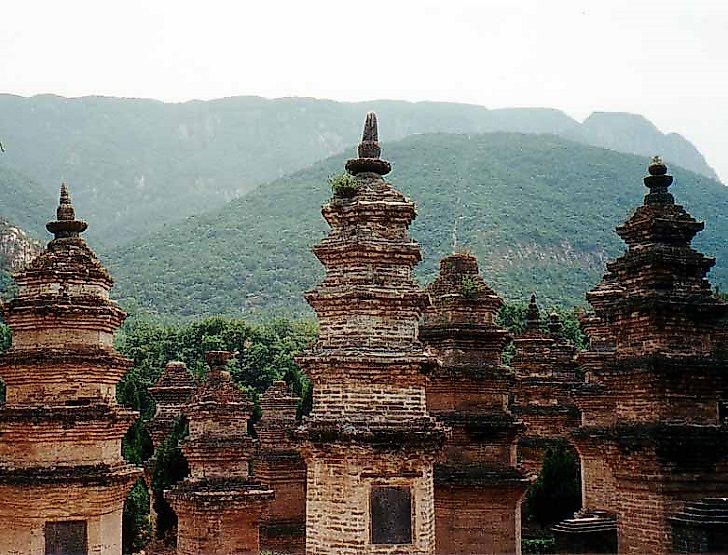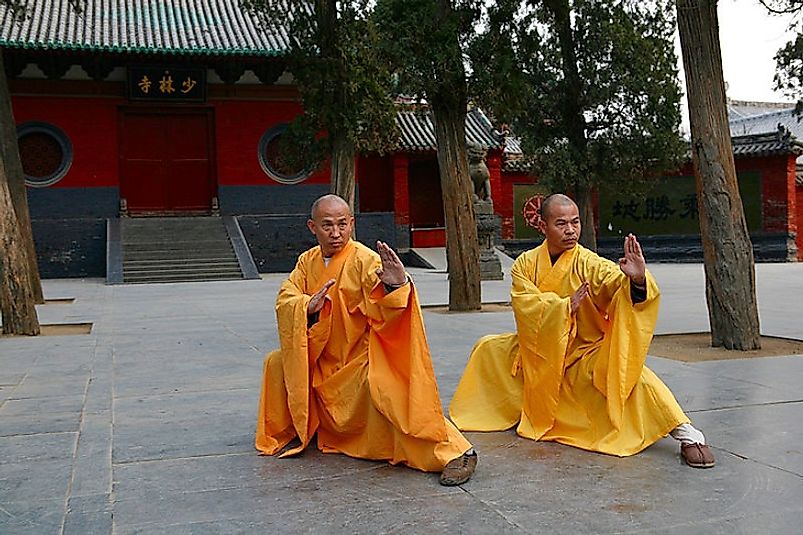Shaolin Temple And Its Amazing Monks

5. Shaolin History
The famed Shaolin Temple or Shaolin Monastery of China is a 1,500 year old Buddhist monastery located in the Henan Province of China on the northern slopes of the Shaoshi peak, the central peak of the sacred Song Mountains of China. The monastery was built in 477 AD during the rule of Emperor Xiaowen of the Northern Wei Dynsaty. In 2010, the Shaolin Monastery was incorporated among the historic monuments of Dengfeng by the United Nations Educational, Scientific, and Cultural Organization (UNESCO), and became part of a UNESCO World Heritage Site the same year.
4. Shaolin Zen Buddhism
From the time of Bodhidharma, a famous Buddhist monk of the late 5th Century, the Buddhism practiced in the Shaolin Temple underwent significant changes from a traditional, ritualistic form to a more naturalistic and meditation based form. Bodhidharma also stressed on the need to develop the physical fitness of the monks to withstand the demands of long hours of meditation and to defend themselves in times of need. The new form of Mahayana Buddhism now started attracting priests and scholars of Taoism to the Shaolin temple since the Taoists could identify with the new views and practices of Buddhism at the Shaolin Temple. This form of Buddhism, known as Chan Buddhism, received a great boost during the rule of the Tang and Song dynasties of China and also spread to other countries where it came to be known by different names like Zen Buddhism in Japan, Seon in Korea and Thien in Vietnam.
3. Martial Arts

At a time when monasteries were easily susceptible to raiders and invaders and the monks needed to travel long distances for preaching purposes, a need was felt to train the Buddhists monks to defend the temple and also defend themselves against violent attacks. Originally, the monks of Shaolin Temple started practicing physical exercises attributed to Bodhidharma to keep themselves physically fit and strong. Soon the monks started experimenting with the fighting system and by absorbing knowledge from other forms of fighting, the monks of the Shaolin Temple developed the Shaolin Ch'uan Fa that stressed on development of the muscle power as well as the internal Chi, the flow or life force of all living beings. Soon, the Shaolin Monastery and its fighting monks became famous throughout China and news also reached other parts of the world. The monastery started serving as the seat of martial arts learning frequented by students of martial arts who arrive from far and wide.
2. Temple Architecture and the Pagoda Forest
The Shaolin Temple is spread over a wide area of 57,600 square meters and comprises of various gates, halls, caves, towers and resting places for the monks. One of the most notable areas of the temple is the Hall of Heavenly Kings which houses the figures of the four Heavenly Kings who are known to be the protectors of people, leading them through the right path, ensuring their well-being. The Mahavira Hall of the temple includes statues of Lord Buddha and the founders of Shaolin Zen Buddhism as well as statues of giant stone lions and pits on the ground regarded as the footprints of the ancient monks of the temple. The Pagoda Forest is another important part of the temple complex which is a graveyard of Buddhist dignitaries. There are also various caves in the complex which are considered to be the meditation grounds of highly revered Buddhist monks. Throughout the temple complex, stone pillars, walls, and ceilings bear exquisite carvings representing Buddhist scriptures, carved warriors, dragons and religious symbols. Thrived by tourists from all across the globe, the grandeur and pristine beauty of the Shaolin Temple thus, never fail to impress all who visit this temple in China.
1. Carrying On a Long, Proud Legacy
During the Mao regime in China, the practice of Shaolin Martial Arts was greatly discouraged. A number of martial artists were executed and others were forced to flee to other countries where they carried their legacy with them. However, post Mao’s death, the Chinese government relaxed its opinions regarding the Shaolin monks, the monks started returning to the temple which was now repaired and maintained by the government and opened to public visitations. Today, the Shaolin form of martial arts is regarded as one of the oldest and most advanced forms of fighting, a Chinese national treasure as well as an inspiration for the world’s fighting systems. The influence of Shaolin martial arts has also triggered the birth of other forms of martial arts like karate, kung-fu, and kempo.











